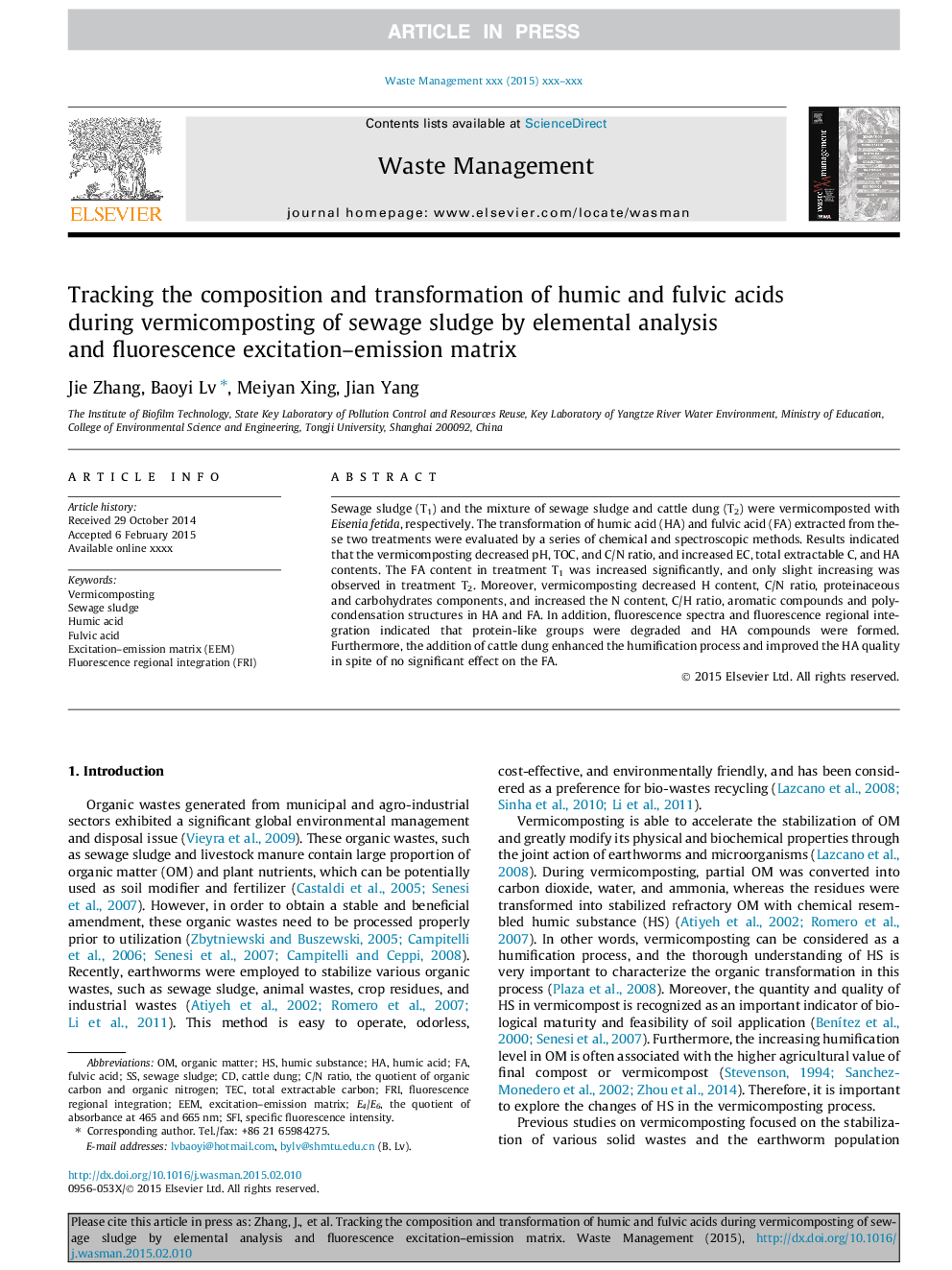| Article ID | Journal | Published Year | Pages | File Type |
|---|---|---|---|---|
| 6354680 | Waste Management | 2015 | 8 Pages |
Abstract
Sewage sludge (T1) and the mixture of sewage sludge and cattle dung (T2) were vermicomposted with Eisenia fetida, respectively. The transformation of humic acid (HA) and fulvic acid (FA) extracted from these two treatments were evaluated by a series of chemical and spectroscopic methods. Results indicated that the vermicomposting decreased pH, TOC, and C/N ratio, and increased EC, total extractable C, and HA contents. The FA content in treatment T1 was increased significantly, and only slight increasing was observed in treatment T2. Moreover, vermicomposting decreased H content, C/N ratio, proteinaceous and carbohydrates components, and increased the N content, C/H ratio, aromatic compounds and polycondensation structures in HA and FA. In addition, fluorescence spectra and fluorescence regional integration indicated that protein-like groups were degraded and HA compounds were formed. Furthermore, the addition of cattle dung enhanced the humification process and improved the HA quality in spite of no significant effect on the FA.
Keywords
Related Topics
Physical Sciences and Engineering
Earth and Planetary Sciences
Geotechnical Engineering and Engineering Geology
Authors
Jie Zhang, Baoyi Lv, Meiyan Xing, Jian Yang,
